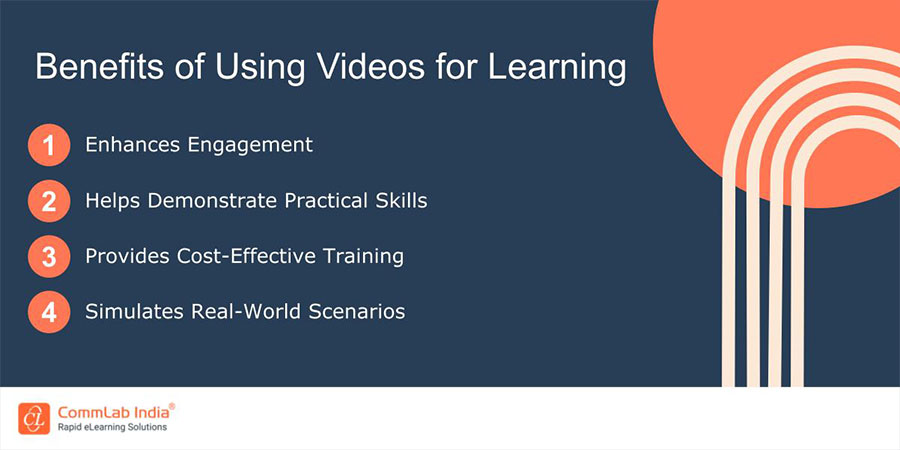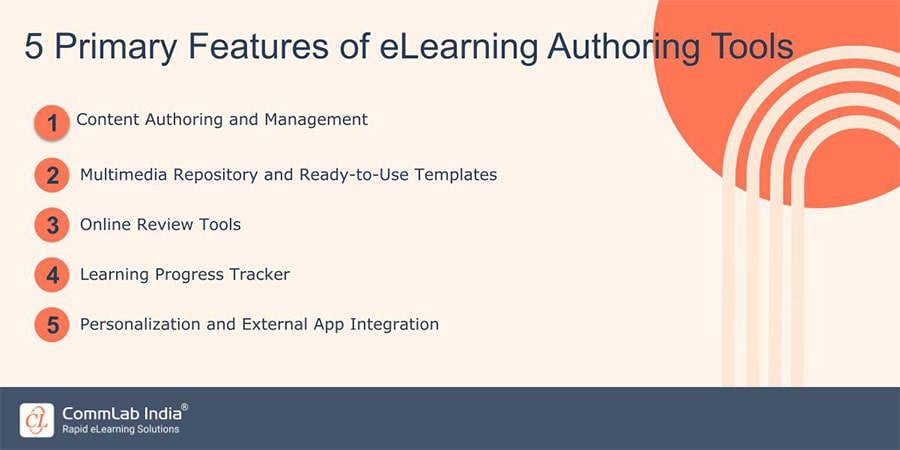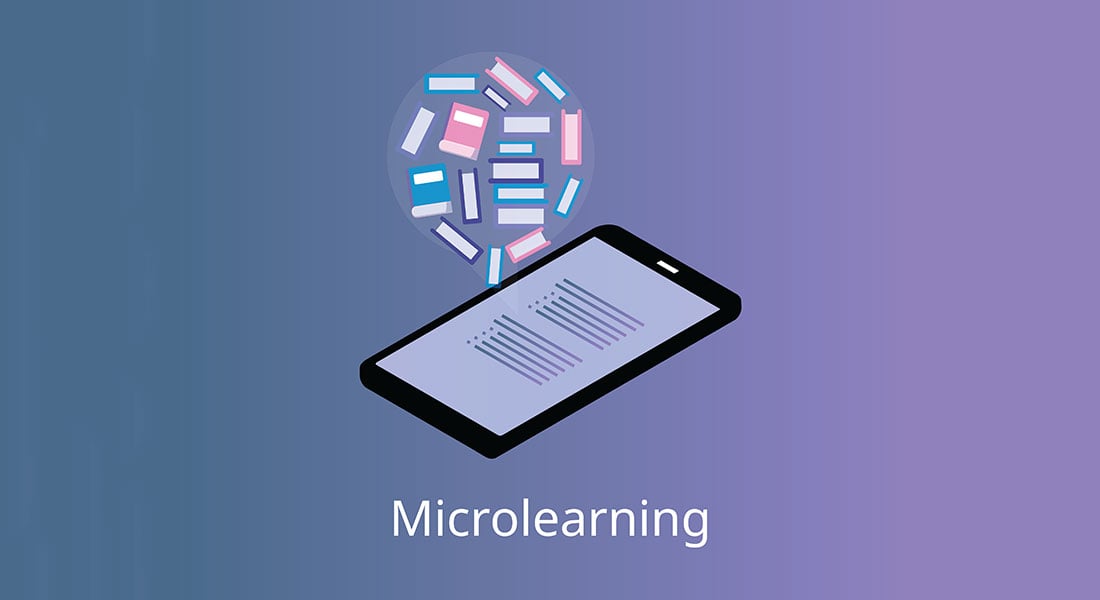Rapid eLearning for Impressive Microlearning — 10 Best Practices
Unleash the power of microlearning! This blog dives into 10 best practices for rapid eLearning, helping you create impactful training experiences.

In today's fast-paced world, attention spans are shrinking, and training needs are evolving. Traditional eLearning courses often feel lengthy and cumbersome, leading to learner disengagement and limited knowledge retention. Enter microlearning: a learning strategy that delivers bite-sized, targeted content in short, digestible bursts. But how do you create effective microlearning modules quickly and efficiently? This blog dives into the world of rapid eLearning, providing 10 best practices to craft impressive microlearning experiences that resonate with learners.
Trying to Craft Effective Microlearning with the Help of Rapid eLearning?
Here are a few best practices to do so -
- Embrace the power of storytelling
- Make it visually appealing
- Utilize microlearning authoring tools
- Test, iterate, and improve
- Promote and track your microlearning modules
10 Best Rapid eLearning Practices for Impressive Microlearning
1. Define Your Microlearning Goals
Before diving into development, clearly define your learning objectives. What specific skills or knowledge do you want learners to acquire? Are you focusing on onboarding new employees, enhancing product knowledge, or reinforcing specific procedures? Use the SMART framework to define specific, measurable, achievable, relevant, and time-bound goals. Aligning your microlearning modules with these goals ensures they deliver targeted and relevant information.
→ Sign Up for the Webinar Now: Microlearning to Overcome Training Challenges
2. Embrace the Power of Storytelling
Storytelling isn't just for children's books. It's a powerful tool to engage learners, make information relatable, and enhance knowledge retention. Here's how to weave stories into your microlearning:
- Develop relatable characters: Create characters learners can connect with, facing challenges relevant to the learning objectives. This could be a new employee navigating a complex process or a salesperson encountering a challenging customer.
- Craft a compelling narrative: Use conflict, obstacles, and resolution to create a captivating story that keeps learners engaged. Show, don't tell, by using dialogue, action, and vivid descriptions.
- Embed learning within the story: Integrate key concepts and skills into the narrative arc. Don't force-feed information; let learners discover and apply it through the story's progression.
3. Keep it Concise and Focused
Remember, "micro" is the keyword. Limit your modules to 5-10 minutes, ensuring they address a single, specific topic. Identify the most critical information learners need to know and avoid overloading them with unnecessary details. Focus on clear, concise explanations and practical examples. Avoid jargon and technical terms that learners may not understand. Use simple, direct language that is easy to follow and comprehend.
4. Make it Visually Appealing
Humans are visual creatures, processing information faster and retaining it better when presented visually. Here's how to leverage visuals in your microlearning:
- Use high-quality visuals: Employ images, infographics, animations, and video-based learning modules that are clear, professional, and relevant to the content. Avoid blurry or pixelated visuals that detract from the learning experience.
- Align visuals with content: Ensure visuals directly support and enhance the information presented. Don't use visuals for decoration; they should have a clear purpose and contribute to understanding.
- Choose the right visual format: Select the most appropriate visual format based on the content. Infographics are great for summarizing complex processes, while animations can explain step-by-step procedures effectively. Here are a few benefits of using videos -

5. Gamification: Add a Touch of Fun
Incorporate game mechanics like points, badges, and leaderboards to incentivize learning and boost engagement. Award points for completing modules, answering questions correctly, or achieving specific goals. Offer badges as rewards for reaching milestones or demonstrating mastery. Create leaderboards to foster friendly competition and encourage learners to strive for better results. Introduce challenges with time limits or specific objectives to keep learners engaged. Offer tangible or intangible rewards for completing modules or achieving high scores. This could include certificates, recognition, or even small prizes.
Gamification can make the learning process more enjoyable and encourage learners to revisit modules for further practice. Remember, gamification should be used strategically to enhance learning, not distract from it. Choose mechanics that align with your learning objectives and target audience.
6. Interactive Elements are Key
Don't just present information; get learners actively involved! Here's how:
- Quizzes and polls: Assess knowledge and gauge understanding with interactive quizzes and polls. Offer immediate feedback and explanations to reinforce learning.
- Simulations and role-plays: Create realistic scenarios where learners can practice their skills in a safe and controlled environment.
- Drag-and-drop activities and games: Make learning fun and interactive with engaging activities that require learners to apply knowledge in a hands-on way.
7. Mobile-First Design is Essential
With the rise of mobile learning, ensure your microlearning modules are optimized for smartphones and tablets. Responsive design allows learners to access and complete modules anytime, anywhere, on their preferred device. Allow learners to download modules and access them even when offline, catering to various learning styles and situations. Optimize images and videos for faster loading times, ensuring a smooth learning experience on mobile devices. Here’s a small video to understand more about mobile learning.
8. Utilize Microlearning Authoring Tools
Rapid eLearning authoring tools offer pre-built templates, interactive elements, and multimedia capabilities to streamline the development process. These tools can significantly reduce development time and cost, making microlearning creation faster and more efficient. Here are a few benefits of using these tools -

9. Test, Iterate, and Improve
Don't just launch and forget. Gather feedback from learners through surveys, polls, and A/B testing to identify areas for improvement. Continuously revise and update your microlearning modules based on feedback to ensure they remain relevant, engaging, and effective.
10. Promote and Track Your Microlearning Modules
Don't let your microlearning modules gather dust. Promote them through various channels, including emails, learning management systems, and social media. Track learner engagement and completion rates to measure the impact of your microlearning initiatives. Assess how your microlearning contributes to achieving overall learning objectives.
Bonus Tip: Embrace Microlearning Ecosystems
Consider integrating your microlearning modules into a larger learning ecosystem. This can involve creating learning paths, combining microlearning with other learning formats, and offering opportunities for reinforcement and practice.
Parting Thoughts!
By following these best practices, you can leverage rapid eLearning to create impressive microlearning modules that engage learners, enhance knowledge retention, and deliver impactful training experiences. Remember, the key lies in focusing on clear goals, concise content, engaging visuals, and interactive elements, all delivered in a mobile-friendly format. If you are willing to understand how you can overcome all your trining challenges with microlearning, you can sign up for this upcoming webinar now and save your seat for the informative and engaging session.





